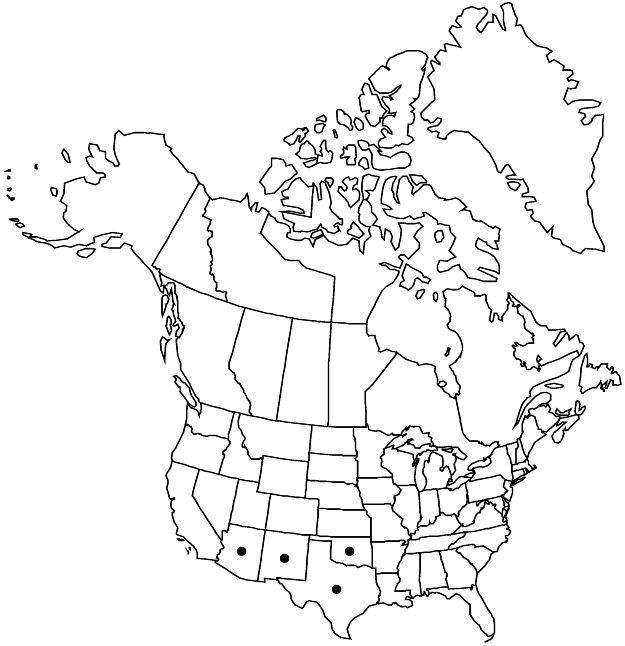Cevallia sinuata
Varied. Ci. 2(4): 36. 1805.
Plants to 6 dm. Leaves: petiole 0–3[–8] mm; blade to 6 × 3 cm, pinnately lobed ± 1/2 to midrib, base usually oblique, acute to obtuse, apex acute with rounded tip; midvein and secondary veins prominent. Flowers: perianth densely covered with long, pointed hairs; sepals 8–9 mm; petals 6–8 mm; stamen filaments 1 mm. 2n = 14, 26.
Phenology: Flowering Apr–Oct.
Habitat: Gypsum and limestone hills, gravelly flats, open desert scrub, Tamaulipan thorn scrub, grasslands.
Elevation: 130–2000 m.
Distribution

Ariz., N.Mex., Okla., Tex., Mexico (Chihuahua, Coahuila, Durango, Zacatecas).
Discussion
The small flowers of Cevallia sinuata have an architecture that promotes deposition of self-pollen on the densely hairy stigma. The absence of a nectary in the flowers may reflect selection for self-pollination or for a pollen-flower pollination syndrome (a so-called pollen flower mimic in the sense of S. Vogel 1978) that possibly involves secondary pollen presentation on the stigma. Various insects, especially bees but also butterflies, have been observed to visit the flowers (W. S. Davis and H. J. Thompson 1967; A. M. Powell et al. 1977). The flowers undoubtedly self-pollinate, but it is unclear whether they self-fertilize or may be self-incompatible.
A. M. Powell et al. (1977) noted that populations of n = 7 and n = 13 cytotypes can be found, and that the latter have a larger geographic distribution and wider ecological tolerance compared to the former. They hypothesized that n = 13 populations were derived via polyploidization followed by aneuploidy.
Selected References
None.
